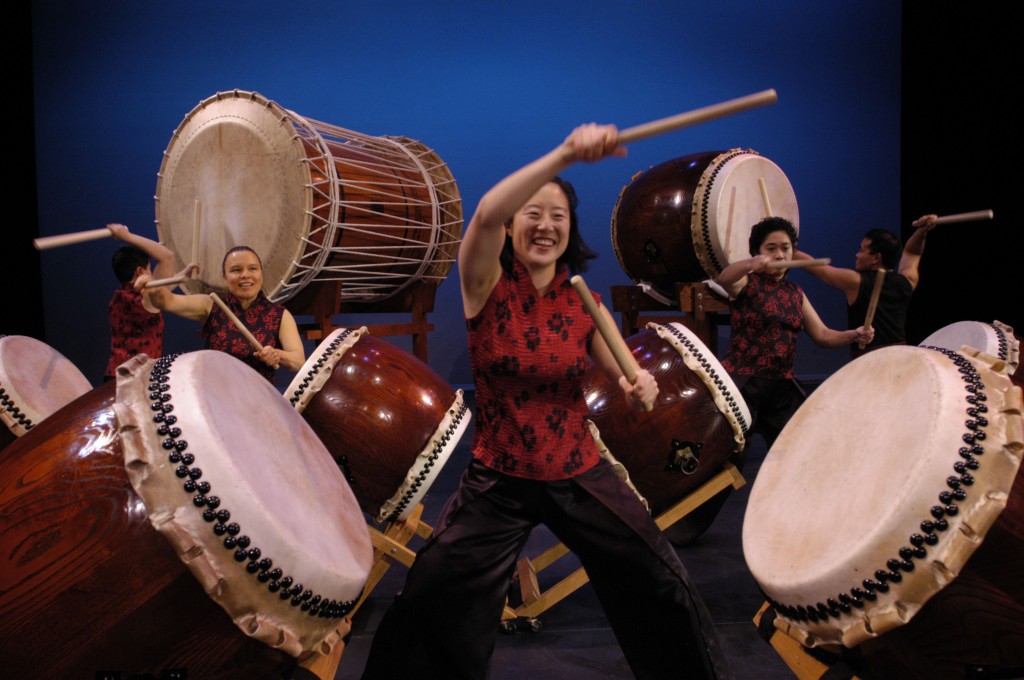Life comes at you in waves, and before one wave pounds against the rocks another one’s just beginning to rise toward its crest. Arts groups in particular know this universal truth: While you’re busy smacking against the shoals of one opening night, several others are already gathering strength.
 Portland Taiko‘s 2010 season begins this weekend with Saturday matinee and evening performances of The Way Back Home, featuring songs from last year’s CD Rhythms of Change. By the time it hits the stage this wave of sight and sound is going to be polished and shaped and sure of itself, like a Katsushika Hokusai print.
Portland Taiko‘s 2010 season begins this weekend with Saturday matinee and evening performances of The Way Back Home, featuring songs from last year’s CD Rhythms of Change. By the time it hits the stage this wave of sight and sound is going to be polished and shaped and sure of itself, like a Katsushika Hokusai print.
That’s this crest. While it was racing toward the shore, a group of almost 20 people met last Friday at Portland Taiko’s warehouse home just off industrial Northeast Columbia Boulevard to start the process toward the next big taiko wave, a collaboration between PT and Ten Tiny Dances that will play June 19-20. I was there in dual roles, as a journalist and a taiko board member. Here’s a taste of what happened:
“When people think of Portland Taiko they think of vast spaces with huge amounts of power,” says Michelle Fujii, PT’s artistic director. “And this is just the opposite of that.”
She isn’t kidding. The sound of taiko drums, born in Japan and modernized in the contemporary fires of North and South American performance troupes such as Portland Taiko, can be small and sensitive but tends toward the big and propulsive. The whole idea behind Ten Tiny Dances, which head honcho Mike Barber began at a wine bar in 2002 in what he thought would be a one-off, is to minimize. Each performance (this will be the 20th public series) consists of 10 short dances performed on a four-foot-by-four-foot platform. It’s all about compactness and discovering a fullness of expression through extreme limitations — like a haiku, or a rhymed couplet. So this collaboration promises to be something of a Mutt and Jeff: a meeting of attractive opposites.
